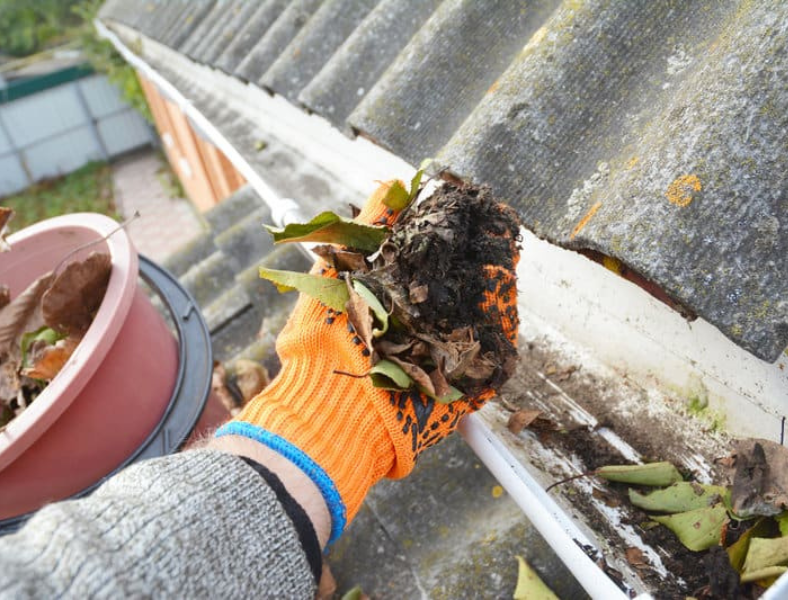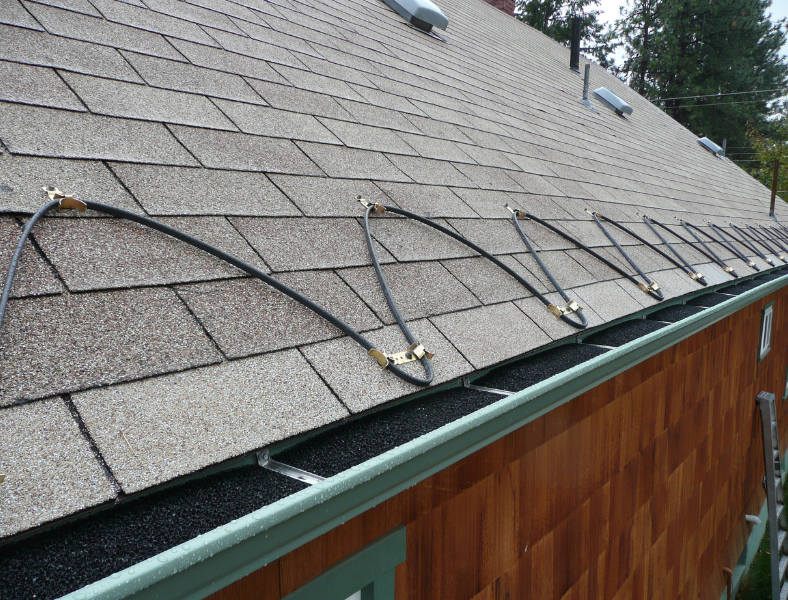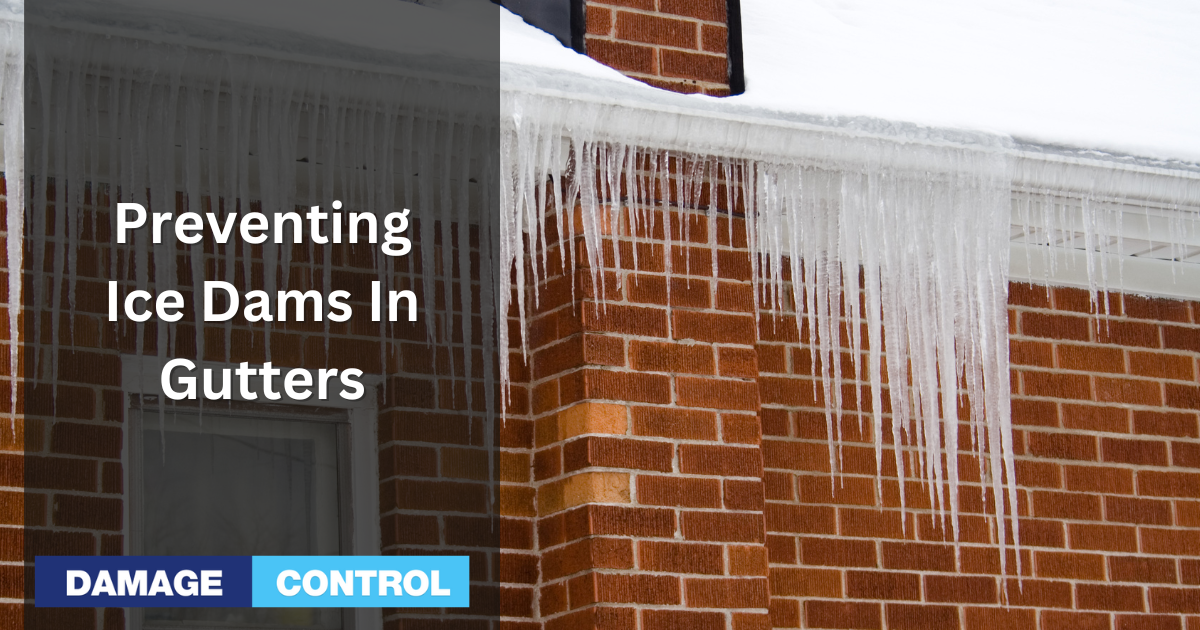Ice dams – we're talking about those pesky frozen buildups in your gutters. They block water flow and can cause big trouble for your home. Preventing ice dams is super important, not just for your gutters but also for your roof and walls.
This article will explore ways to stop ice dams before they even form. We'll learn about insulation, ventilation, and other cool tips. So, let's get started and keep those gutters ice-free!
The Formation of Ice Dams
How ice dams form
Ice dams sneak up on us, forming when snow on the roof starts to melt. Heat escapes from inside our cozy homes, causing the snow to turn into water. But wait! The water hits the colder edge of the roof and – brrr! – it freezes again. This cycle repeats, and soon, a wall of ice blocks our gutters.
The role of gutters in ice dam formation
Gutters play a big part in ice dam drama. They're supposed to help water flow away from your home but can't do their job if they're clogged with leaves or other debris. Add ice to the mix, and the water has nowhere to go. It can even seep back into your home, causing damage.
Common causes of ice dam formation
Let's break down some reasons why ice dams form:
- Poor insulation: If your attic isn't well-insulated, heat escapes, leading to melting snow and ice dam formation.
- Uneven roof temperatures: When parts of your roof are warmer than others, it creates a melting-freezing cycle that results in ice dams.
- Clogged gutters: As mentioned earlier, debris-filled gutters can't drain water, setting the stage for ice dams.
Now that we know the causes of ice dams, let's determine the risks involved.
The Risks of Ice Dams
Structural damage to gutters and roofs
Ice dams are bad news for your home. They can cause gutters to sag or even break off under the weight of the ice. The dams can also damage your roof by lifting shingles, creating entry points for water.
Water infiltration and interior damage
Once water finds its way in, it's like an uninvited guest that won't leave. It can soak into insulation, making it less effective. Water can also stain ceilings and walls and cause wood to rot. And let's not forget the possibility of mold and mildew – yuck!
Safety hazards
Besides being bad for your home, ice dams can be downright dangerous. Chunks of ice can break off and fall, potentially injuring people or pets below. Plus, the extra weight on your roof can lead to structural issues, making it unsafe for you and your family.
Ice dams are a risk we want to avoid. So, let's dive into some prevention tips!
Tips for Preventing Ice Dams
Insulation and ventilation
The importance of proper insulation
A well-insulated attic keeps heat inside your home, reducing the chances of ice dams forming. Make sure your attic has enough insulation and that it's evenly distributed. Your home will stay warm, and your roof will stay ice-free.
The role of ventilation in preventing ice dams
Ventilation goes hand-in-hand with insulation. You'll keep the roof temperature even by allowing cool air to flow through your attic. So, ensure your vents are clear and working properly to prevent those pesky ice dams.
Regular gutter maintenance

Cleaning debris from gutters
Keep your gutters clean! Regularly remove leaves, twigs, and other debris that can clog them. This ensures that water can flow freely without damaging ice dam formation.
Checking for proper gutter alignment and installation
A well-installed gutter system makes a big difference. Check that your gutters are correctly aligned and securely fastened to your home. This helps water drain away and prevents ice buildup.
Ice and water barriers
Types of barriers available
Ice and water barriers are like a shield for your roof. They prevent water from seeping in when ice dams form. There are different types available, such as adhesive membranes and specialized underlayments. Choose one that best suits your home's needs.
Proper installation
For these barriers to work, they must be installed correctly. Hiring a professional to ensure the job is done right, protecting your home from ice dams and water damage.
Heating cables

How heating cables work
Heating cables are like a warm hug for your gutters and roof. They're designed to prevent ice buildup by gently warming the area. This helps snow and ice melt so it doesn't become an ice dam.
Installation and safety considerations
Installing heating cables can be a bit tricky. Follow the manufacturer's instructions or hire a pro to do it for you. Always keep safety in mind, unplugging the cables when they're not needed and checking for damage regularly.
With these tips, you'll be well on your way to preventing ice dams and keeping your home safe and sound!
Detecting and Dealing with Ice Dams
Signs of ice dam formation
Keep an eye out for these warning signs that an ice dam might be forming:
- Icicles hanging from your gutters or roof edge.
- Ice buildup in your gutters.
- Water stains on ceilings or walls.
- Damp or moldy insulation in the attic.
Safe methods for ice dam removal
If you spot an ice dam, don't panic! Here's how to deal with it safely:
- Use a roof rake to remove snow from the edge of your roof. Be gentle, and avoid damaging your shingles.
- Fill a nylon stocking with calcium chloride (ice melt) and place it across the ice dam. It'll help melt the ice and create a path for water to drain.
- Never use an open flame or sharp tools to remove ice dams. This can cause more harm than good.
When to call a professional
Sometimes, it's best to leave ice dam removal to the pros. If the ice dam is large, hard to reach, or causing significant damage, call a professional to handle it safely and efficiently.
Detecting and dealing with ice dams early can protect your home from costly damage and keep your family safe. Now you're ready to tackle ice dams like a pro!
Conclusion
Preventing ice dams is crucial for maintaining a safe and damage-free home. Following our tips, you'll be well-prepared to tackle ice dams and avoid costly repairs. Don't forget the importance of insulation, ventilation, gutter maintenance, and ice barriers to keep your home in tip-top shape. We encourage you to be proactive and take preventive measures to protect your home from ice dams.
As a homeowner, staying informed and prepared for various challenges is important. To help you on this journey, we invite you to read more of our related articles. Check out our posts on installing seamless gutter systems, cleaning tips, tools, gadgets, and ideas. The financial guide to drainage protection includes the purchase price and the potential savings in reduced cleaning and repair costs over the years. We also have a guide about how properly installed gutter heaters add protection against ice dams. Equip yourself with knowledge and keep your home safe and sound!

